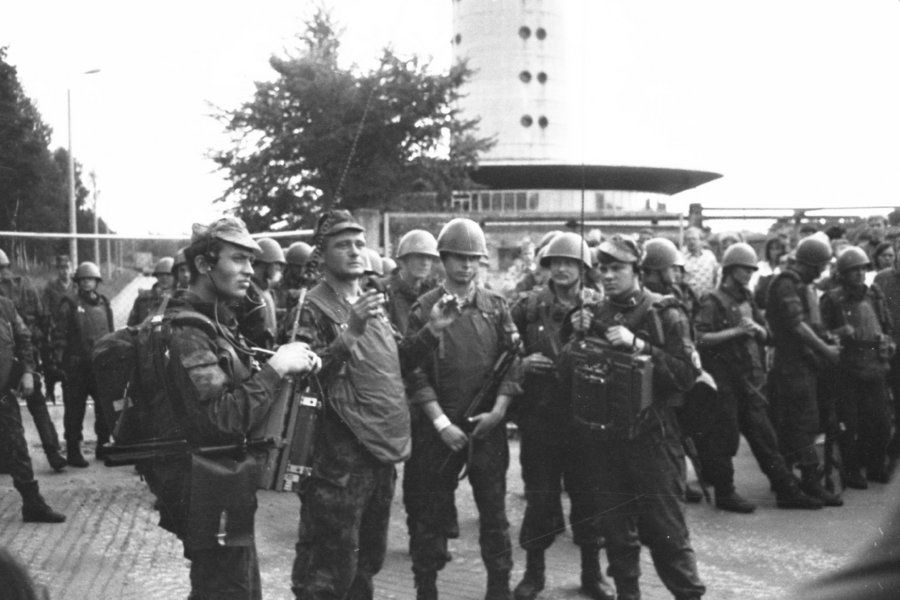On 20 August 1991 a column of Soviet tanks and armoured vehicles advanced towards Tallinn from Russian Pskov in the southeast. This followed a bizarre coup attempt in Moscow, in which president Mikhail Gorbachev was placed under house arrest while on holiday in Crimea. The Estonian Supreme Soviet used the political crisis to seal the restoration of independence to Estonia. What the Soviet military would do on reaching Tallinn was anyone’s guess.
The events of 18-21 August come to life every year in a docudrama. We watched it at breakfast with family in central Estonia, having raised the blue, black and white tricolour outside. Crowded around the kitchen table, eating kilu võileib (a sardine-like fish on rye bread) and drinking coffee, we relived with our cousins’ running commentary the days unfold at the TV station in Tallinn. Soviet troops intended to storm the tower to cut news transmission, and it very nearly happened.

Soviet troops surrounding the Tallinn television tower, 20 August 1991: estonianworld.com
A monument outside the TV tower records how “four men locked themselves in the rooms on the 22nd floor of the tower to maintain a connection with the outside world.” To defend themselves, they had one or two pistols. Radio and TV personnel continued broadcasting, while the parliamentarians deliberated.
At 11.03pm on 20 August with 69 votes in favour, the Supreme Council of the Republic of Estonia adopted the Resolution on the national independence of Estonia. From that moment all ethnic Estonians everywhere in the world became Estonian nationals, for the first time in 51 years. Our grandma could never have dreamt this would happen. But it was not all over yet.
By 4.30am the following day Soviet troops had reached the 21st floor of the TV tower, and at midday a commander of the 76th Guards Air Assault Division threatened to gain entry to the 22nd floor by force. Then a do-or-die moment: “The men barricaded in the communication room responded by threatening to activate the oxygen-removing, fire-fighting system, which would asphyxiate everyone in the tower in a few minutes,” in the words of Stanford University's reporting of the events.
The standoff ended at 5.30pm after discussions between Estonian political leaders and the Soviet military, while the removal of Soviet troops from Estonia took rather longer, an agreement signed on 26 July 1994 between Estonia’s new president Lennart Meri and Russian President Boris Yeltsin.
A photo of the occasion is on display at an exhibition on Estonia’s independence in Kuresaare castle on the island of Saaremaa. Meri is smiling, and Yeltsin’s face is fixed in a grimace, let’s hope, a genuine well-wishing of Estonia’s return to the community of nations.
Estonia was admitted to the United Nations in September 1991, and joined the European Union in 2004, the same year the country joined NATO.
After breakfast, our cousin Inga gave Greg and I each an Estonian flag and pennant, and the gesture means a great deal to me. A child and grandchild of Estonian exiles has returned home, in awe of the deeds of others, to begin relatively late in life the long journey of understanding what an Estonian is, and what it means to be Estonian.
Commenti